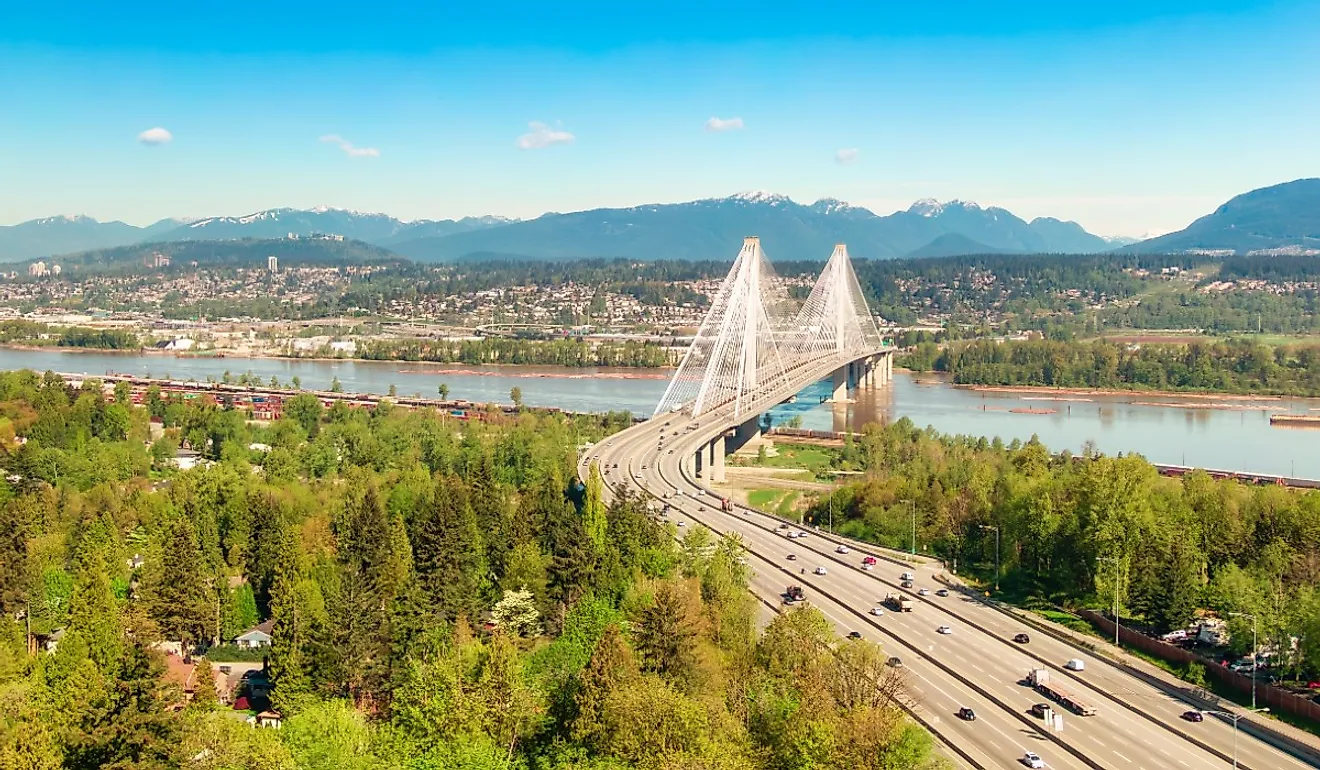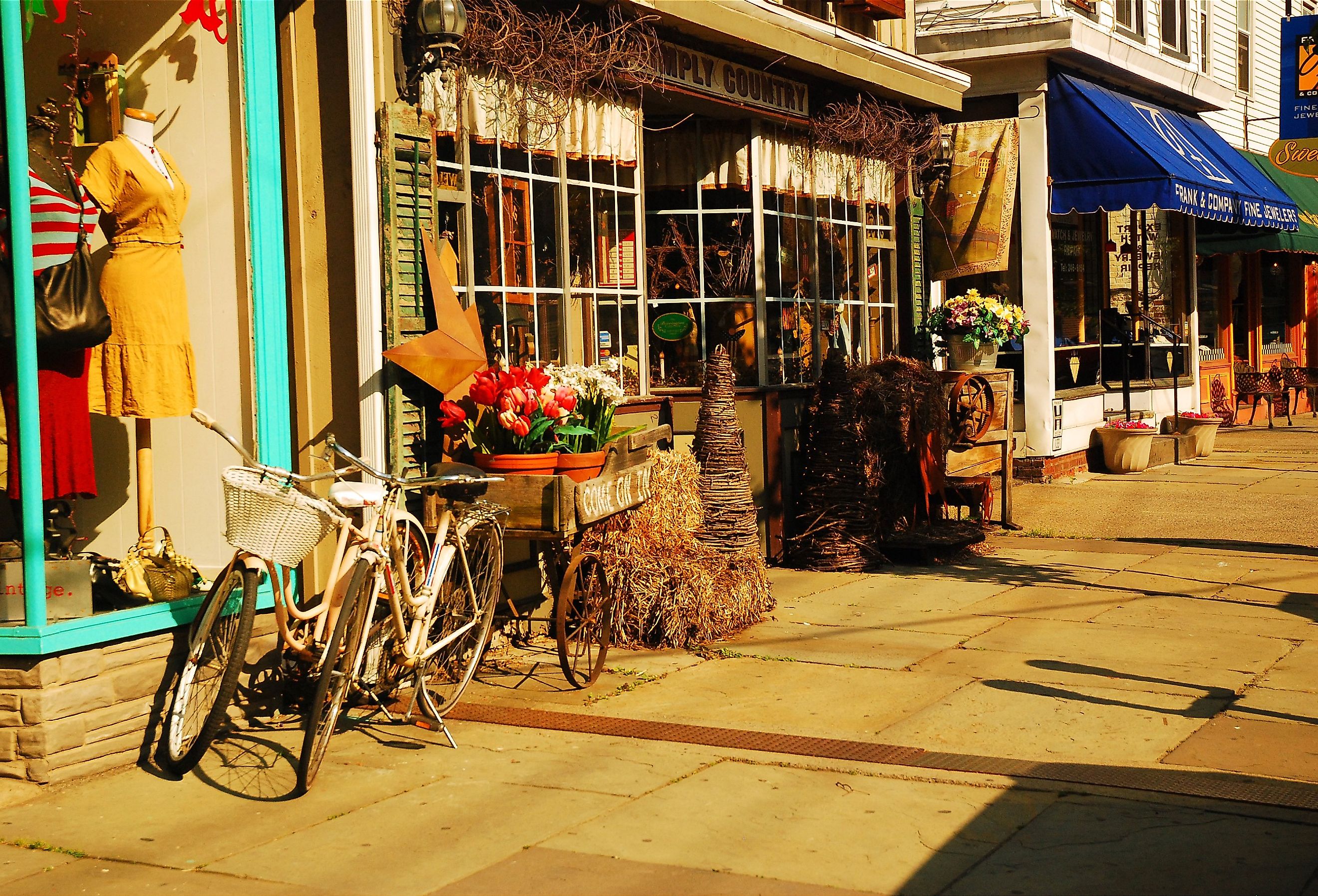
8 Most Bike-Friendly Towns in New York
Most people associate the state of New York with New York City, nicknamed The City That Never Sleeps for its endless bustle and pulsing energy. However, there is a lot more to this magnificent state than densely populated areas like Manhattan and Brooklyn. A number of charming small towns hidden in the Empire State offer an ideal fusion of culture, history, and outdoor activities. For cyclists, in particular, these towns provide relief from the fast pace of city life, coupling scenic routes with a sense of tranquility. From the historic battlegrounds of Ticonderoga to the lovely streets of Cold Spring, these destinations allow riders to bask in New York's rich heritage while taking in the captivating beauty of its countryside. Uncover eight bike-friendly towns you won’t miss on your next New York getaway.
Cold Spring
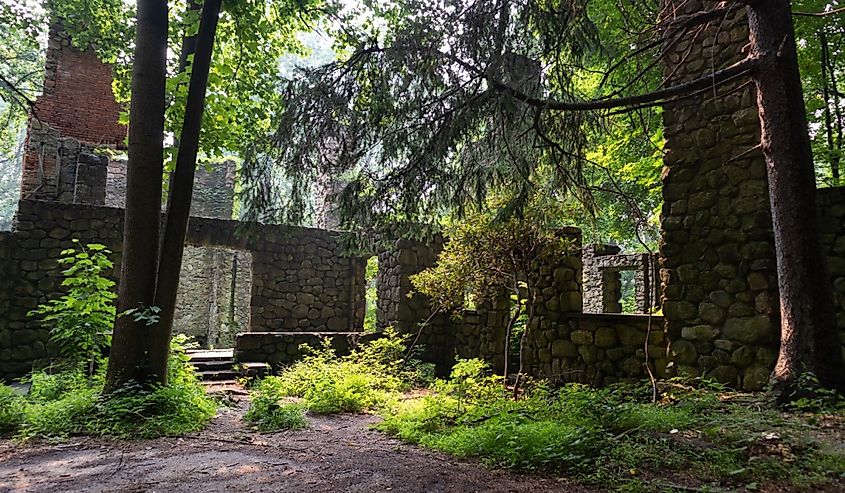
A small, charming village set along the banks of the Hudson River in Putnam County, Cold Spring is approximately 50 miles north of New York City. Lauded for its beautifully preserved 19th-century architecture and picturesque beauty, this town of roughly 1,900 people was incorporated in 1846. Margaret’s Brook, a small creek located west of Route 9D, which runs into the Hudson River, generated hydropower for the West Point Foundry, which produced artillery and helped catapult Cold Spring from a small hamlet into a lively village. Moreover, George Washington is said to have drunk from a local spring and professed it to be refreshingly cold.
The village's downtown area is listed on the National Register of Historic Places due to its landmarks and historic sites. Lined with local boutiques, cafes, shops, and restaurants, Main Street is the perfect place to grab a bite or coffee and soak up the scenic surroundings. Great spots for biking include Hudson Highlands State Park, a mostly undeveloped preserve of over 8,000 acres, and the West Point Foundry Preserve, the only one of four historic ironworks selected by President Madison to supply artillery to the US military that remains standing.
Saugerties

The village of Saugerties has some 3,900 residents, while the larger town, which includes the surrounding rural areas, has approximately 19,000 people. Situated between the Hudson River and the foothills of the Catskill Mountains in Ulster County, Saugerties is recognized for its rich heritage as a manufacturing hub and its lively arts scene. After burning Kingston, New York, in October 1777, a British squadron, under orders from Sir Henry Clinton, continued north on the Hudson River to Saugerties and proceeded to burn down several barns, homes, and sloops. The bluestone quarried in Saugerties was used for crosswalks, curbing, paving, window sills, and doorsills, finding its way to such cities as New York City, Philadelphia, and Boston.
The roads here are seldom crowded, affording bicyclists easy access to Esopus Creek, the Hudson River, and tranquil marshlands. The 4.5-mile Saugerties Rail Trail runs from the village of Saugerties to the nearby town of Ulster. It is ideal for a leisurely bike ride before grabbing lunch. The nearby Catskill Park provides a range of biking opportunities, with both mountain biking trails and scenic road routes. You can also check out hand-built stone structures at Opus 40 or people-watch with a cup of coffee downtown at Saugerties Village.
Skaneateles
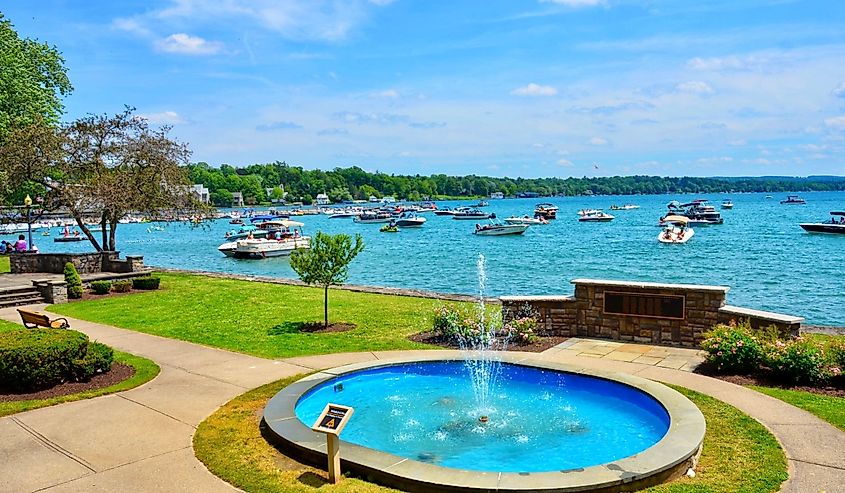
The town of Skaneateles began with tracts of wilderness being promised to Revolutionary War soldiers in the 1790s as incentives for enlisting and as payment for fighting due to a death of cash. Initially part of the township of Marcellus, the town was separated and established independently in 1830, while the Village, at the head of the lake, was incorporated in 1833. Skaneateles is located in Onondaga County, part of the Finger Lakes region of central New York.
Known for its beautiful lake and historic downtown laden with 19th-century buildings, Skaneateles attracts visitors longing for a mix of small-town charm and lush surroundings. Moreover, the small area makes it easy to navigate by bike, whether you’re at Skaneateles Lake Loop, West Lake Road, or the Charlie Major Nature Trial. Housed in a restored creamery, the Skaneateles Historical Society Museum sheds light on the local history, including exhibits on the village’s role in the Underground Railroad and its early industries.
Ticonderoga
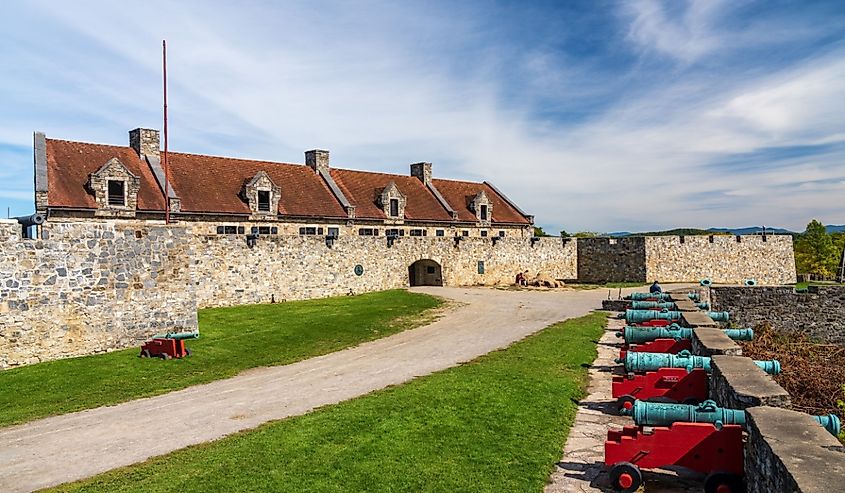
Ticonderoga is a hamlet in the southeast part of the town of Ticonderoga in Essex County. The name comes from the Iroquois and Algonquin term for "between the two waters," referring to Lake Champlain and Lake George. Constructed in 1754, Fort Ticonderoga was the site of various battles during the French and Indian War and Revolutionary War. In 1775, Benedict Arnold, Ethan Allen, and the Green Mountain Boys, a Vermont rebel militia, attacked the sleeping fort and captured the British soldiers there, marking the first rebel victory of the Revolutionary War. In the first half of the 19th century, the boat building, lumber, and shipping industries boomed in Ticonderoga, thanks mainly to its accessibility to waterpower from Lake Champlain and the Lachute River.
Offering everything from a museum and reenactments to musket demonstrations and historic gardens, Fort Ticonderoga appeals to history buffs and those who want to do some hiking while admiring native flowers and ferns. Ticonderoga biking trails and cycling routes in the surrounding area afford spellbinding scenery and challenging routes. The Champlain Bikeway, a 363-mile route around Lake Champlain and into Quebec, Canada, is a favorite. Whether you want to camp at Putnam Pond, enjoy a range of great restaurants and shops, or boat on Lake George, there’s something here for every taste!
Aurora
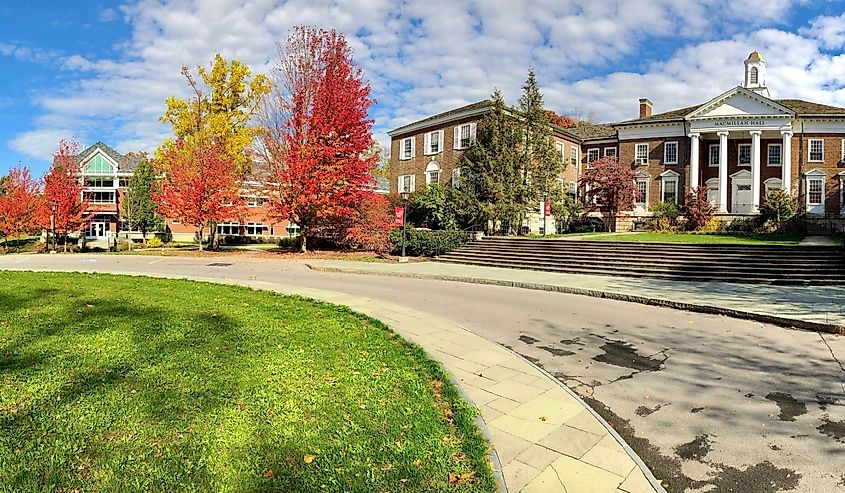
An inviting village on Cayuga Lake, the longest of the Finger Lakes of Central New York, Aurora offers scenic biking paths that novice and experienced cyclists alike will appreciate. During the Revolutionary War, General George Washington sent General John Sullivan on a scorched-earth campaign through Central New York primarily aimed at the Cayuga and the Seneca, two of the six nations that made up the Iroquois Confederacy, as well as Loyalists in the area. Euro-American settlement of Aurora commenced in 1789, with the village being named Aurora in 1795 and incorporated under that name in 1837. The Erie Canal later made Aurora a bustling means of transport for grain, wool, and other commodities.
Today, you can see several buildings that reflect Aurora’s history and heritage, from the Dutch-framed Patrick Tavern, built in 1793 and the oldest building in Aurora to several early Federal homes and grand Queen Anne houses. Unsurprisingly, the entire village was placed on the National Register of Historic Places in 1976, with several structures accorded national landmark status. A bevy of fabulous cycling opportunities are on offer, including the Auburn-Fleming Trail, Cayuga-Seneca Canal Trail, and Keuka Outlet Trail. Long Point State Park is the perfect place for a picnic coupled with stunning views of Cayuga Lake.
Rhinebeck
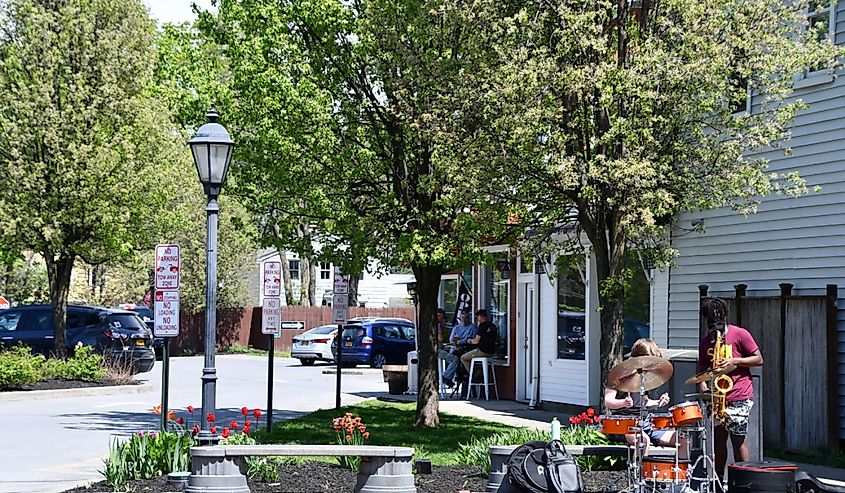
Rhinebeck is a haven for history lovers, with well-preserved colonial architecture, grand estates, and scenic vistas vying for your attention. Dutch families first settled the land around 1686, though the village of Rhinebeck wasn’t incorporated until 1834. The surrounding Hudson Valley offers outstanding routes for cyclists, including the Rondout Creek Loop, Kingston Loop, and Hussey Hill Loop. Voted Best Shopping Block by Hudson Valley Magazine, Montgomery Row impresses with its wide selection of shops and farm-to-table eateries. Visit the Wilderstein Historic Site, a fascinating museum in what was once the home of Margaret Suckley, a distant cousin and confidante of Franklin D. Roosevelt.
If you wish to delve deeply into the rich maritime history of the Hudson River, be sure to check out the Hudson River Maritime Museum. What’s more, the Rhinebeck Museum, which is housed in a structure built in 1798, showcases handcrafted items from Rhinebeck’s past, including artwork and textiles. Those thirsting for adventure can climb the fire tower at Ferncliff Forest. If unwinding is at the top of your mind, take classes and workshops at the Omega Institute, or head to the Beekman Arms Antique Market for some unique finds.
Lake Placid
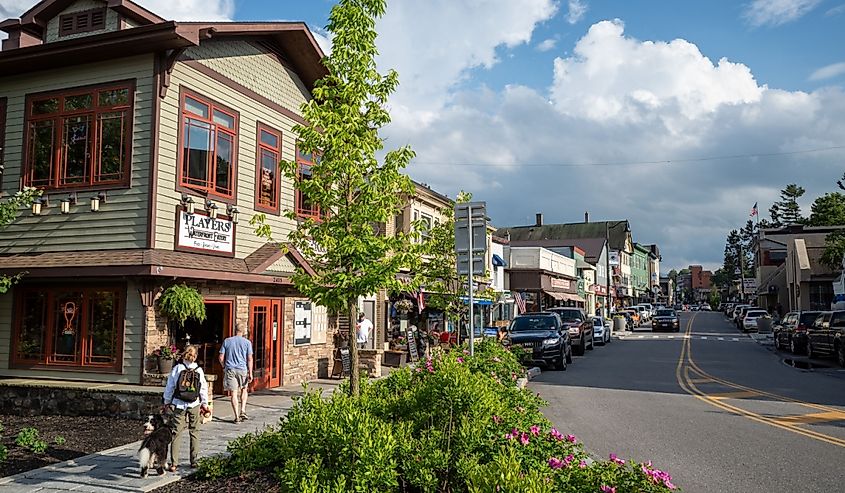
Touted for its Olympic history after having hosted the 1932 and 1980 Winter Games, Lake Placid enjoys a small-town vibe and scenic biking routes through the astounding Adirondacks. Settled in 1800 but abandoned following crop failures, the site was resettled in the 1840s and promoted in 1850 as a summer resort. Melvil Dewey of Dewey Decimal Classification fame founded the exclusive Lake Placid Club in 1895. The town’s well-maintained trails make it ideal for both mountain biking and road biking, with the 56-mile Ironman Lake Placid Loop and Adirondack Loj Road among popular choices.
There is plenty for history buffs to do here, from discovering a range of interesting photos and memorabilia at the Lake Placid Olympic Museum to taking a deep dive into abolitionist John Brown’s life at the John Brown Farm State Historic Site. Grab a cup of coffee and browse the shops and art galleries along Main Street. Nearby is the Lake Placid-North Elba Historical Society, which is housed in a former railroad depot and is committed to preserving the community’s vibrant history. Lodging options run the gamut from cozy bed and breakfasts to luxurious hotels.
Hudson
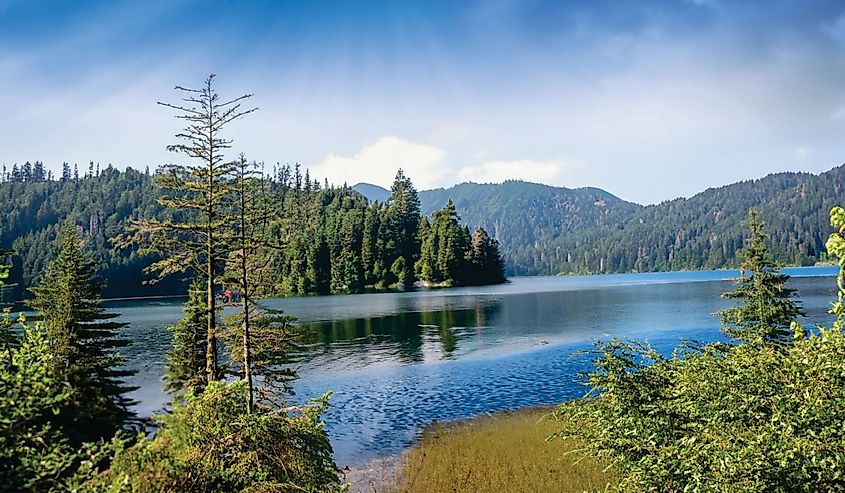
Hudson, named after the explorer of the Hudson River, Henry Hudson, maintains its historic and small-town charm with a population of roughly 6,000 people. It has the distinction of being the first city chartered in the country after the American Revolution. Cyclists are treated to scenic routes as they pass historic architecture and eclectic art galleries. The Empire State Trail and Hudson Valley Rail Trail, which run through the Hudson Valley, suit severe and casual riders alike. You’ll be hard-pressed to find better Hudson River views of the Catskills than at Promenade Hill Park, established in 1795.
There is no shortage of culture and history here, from the home of painter Frederic Edwin Church and Hudson Hall to the Hudson-Athens Lighthouse, one of two remaining lighthouses standing in the middle of the Hudson River. You’ll marvel at the many antique and home décor stores lining Warren Street, not to mention inviting coffee shops and restaurants for every palate. Open on Saturdays, the Hudson Farmers Market features crafts, local produce, and baked goods. Consider staying at The Wick, Hudson, a Tribute Portfolio Hotel housed in a repurposed 1860s candle factory and combines history charm with modern amenities.
These towns provide more than mere cycling paths; they provide a glimpse into New York’s past and a serene reprieve from the day-to-day. By biking through the Adirondack backdrop of Lake Placid, Cold Spring’s riverside lanes, or Saugerties' quaint streets, you can experience the state's diverse history and natural beauty for yourself. These towns personify the spirit of New York’s small-town charm, with each route unveiling a unique past. Whether it’s discovering a Revolutionary War site with the family or riding along a picture-perfect lake with friends, these bike-friendly towns invite you to become absorbed in history and nature at a leisurely pace, allowing you to take in the journey fully and create lifelong memories.











